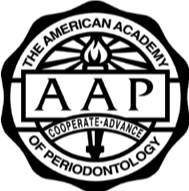
Titled “The Effect of Toothbrushing and Flossing Sequence on Interdental Plaque Reduction and Fluoride Retention: A Randomized Controlled Clinical Trial,” the study assessed 25 participants who were asked to brush their teeth first, then use dental floss to clean the spaces between their teeth (brush-floss). In a second phase, the same group was asked to use floss, then brush their teeth (floss-brush). Researchers found that the amount of plaque between the teeth and in the mouth overall was significantly reduced when participants used the floss-brush approach.
The researchers contend that as flossing loosens bacteria and debris from between the teeth, brushing afterwards (when the mouth is rinsed with water) further clears the mouth of these particles. Plaque bacteria are the primary culprit behind the development of periodontal disease, an inflammatory condition that occurs when bacteria accumulate below the gum line. Periodontal disease can lead to swelling, irritation, gum recession, and tooth loss if left untreated.
“Patients often ask which step should come first in their daily oral hygiene routine,” says Steven R. Daniel, DDS, president of the AAP. “While this study finds that flossing before brushing may result in the reduction of plaque, it’s important for everyone to remember to do both every day to maintain the health of their smiles.”
The study also found that fluoride, a mineral that aids in the prevention of cavities and tooth decay, remained in the mouth at higher levels when participants flossed before brushing. Study subjects used a fluoride toothpaste during both phases of the investigation.
“As with choosing the right type of toothbrush and interdental cleaner, patients should also consult with their dentists on whether a fluoride toothpaste is best for them,” Dr. Daniel says.
The AAP recommends flossing regularly, brushing twice a day, and undergoing yearly comprehensive periodontal evaluations for the prevention of periodontal disease, which is treatable and often reversible with proper and timely care from a periodontist.
The complete study can be found on the JOP portal of the Wiley Online Library. To learn more about periodontal disease or to find a periodontist in your area, visit perio.org.
About the American Academy of Periodontology
The American Academy of Periodontology (AAP) represents over 8,000 periodontists—specialists in the prevention, diagnosis, and treatment of inflammatory diseases affecting the gums and supporting structures of the teeth, and in the placement of dental implants. Periodontics is one of the nine dental specialties recognized by the American Dental Association.





